元宵节正月十五吃元宵的的习俗由来已久,元宵也叫“汤圆”、“圆子”。据说元宵象征合家团圆,吃元宵意味新的一年合家幸福、万事如意。以下是小编整理的英语手抄报关于元宵节,欢迎阅读参考!
关于元宵节英语手抄报图片:
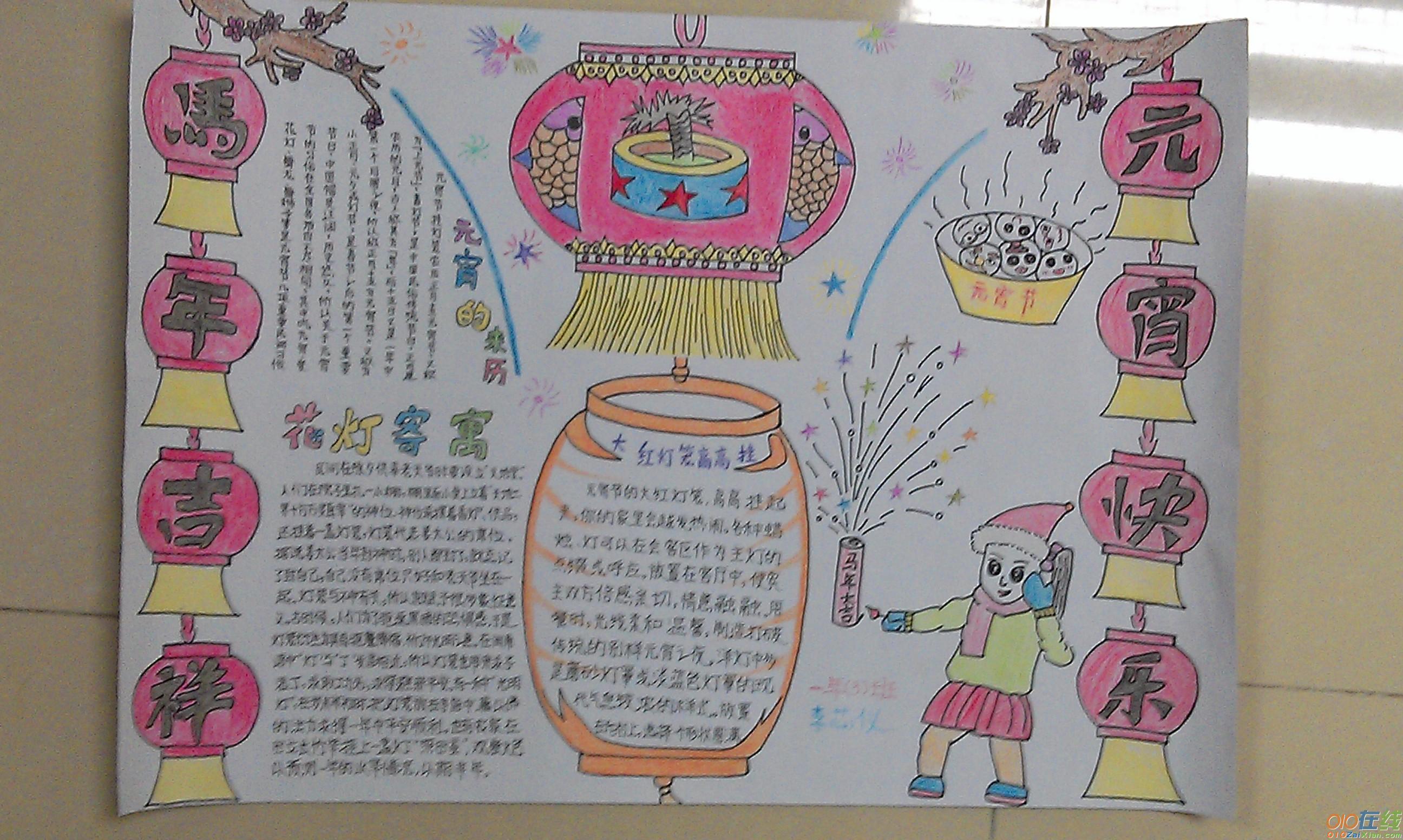
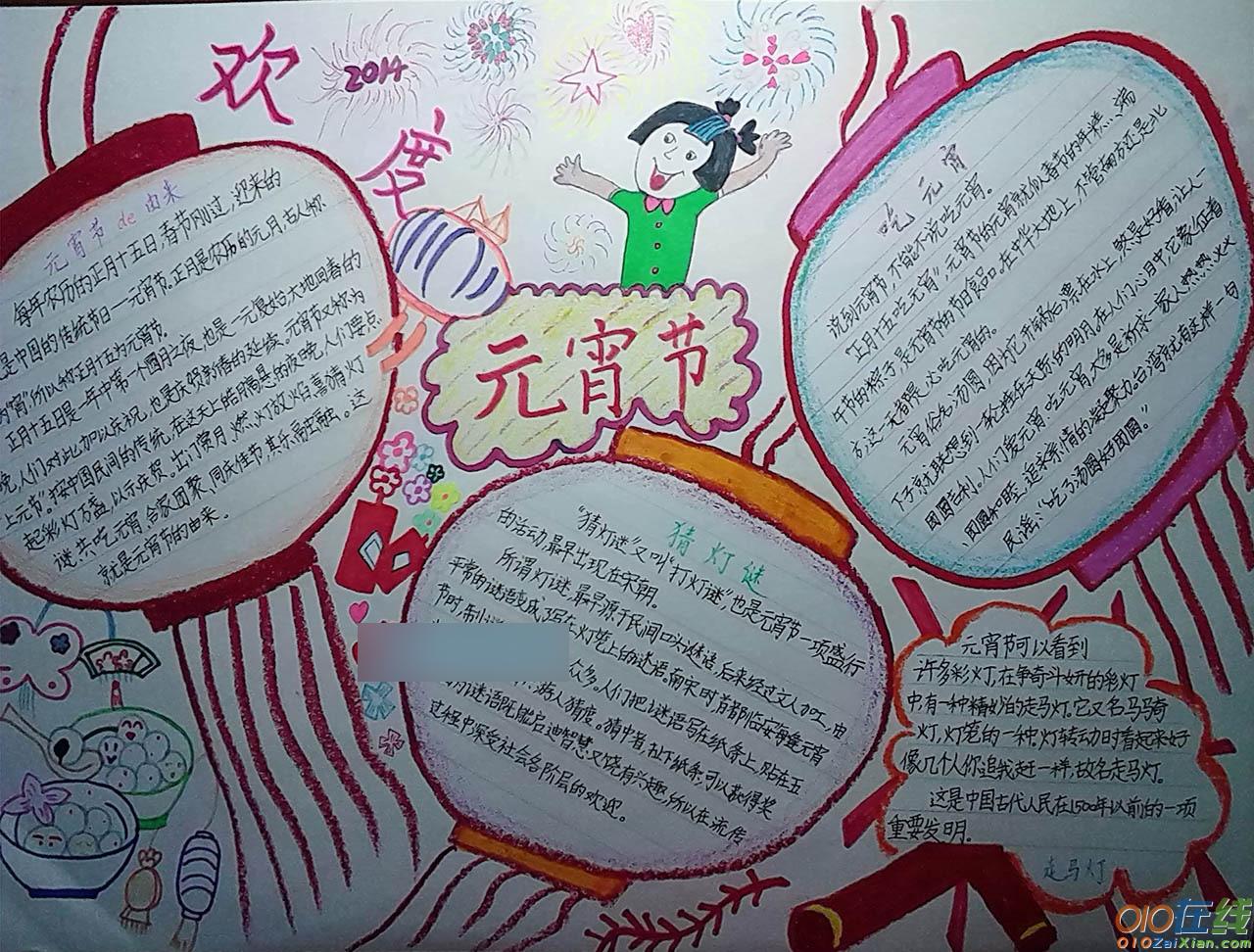
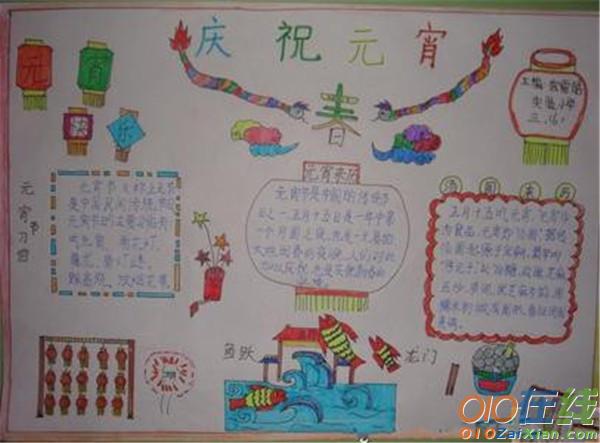
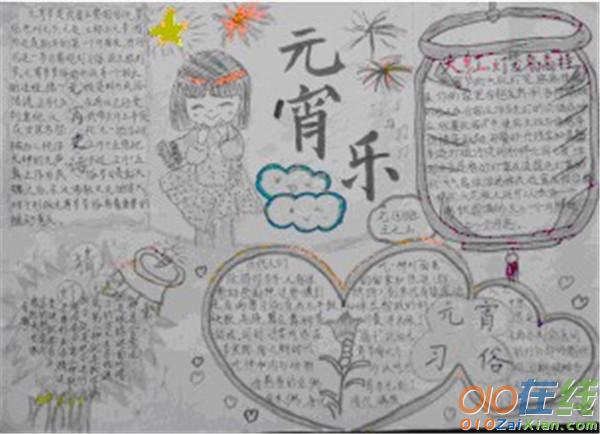
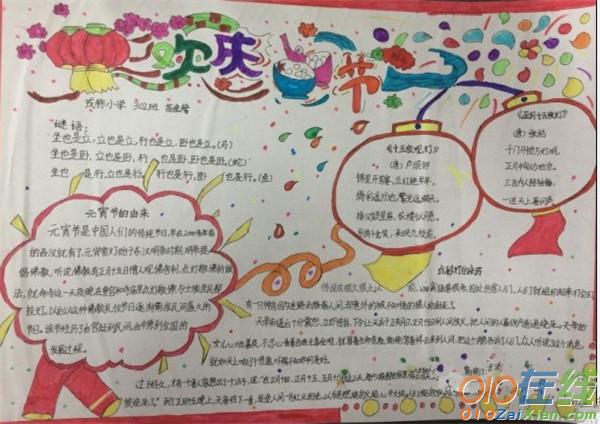
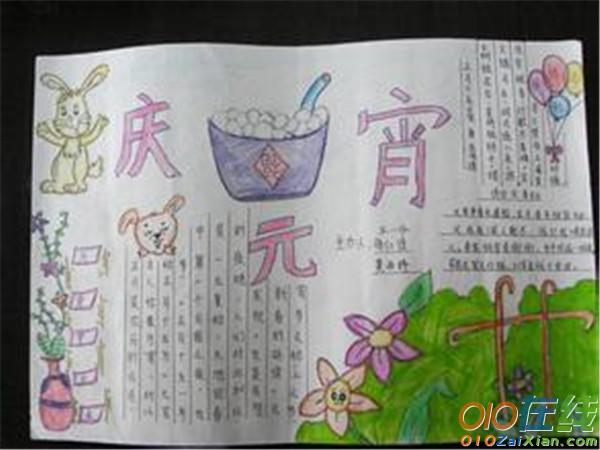
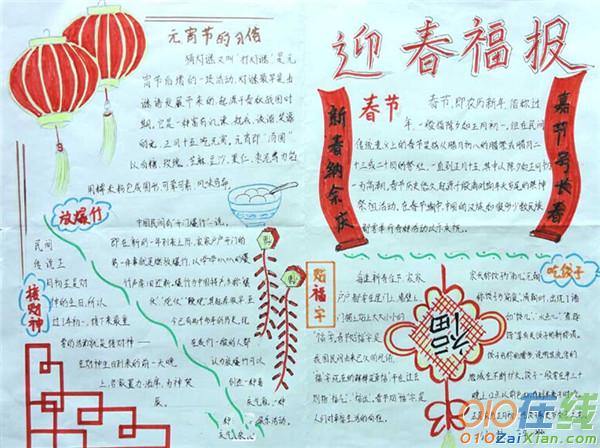

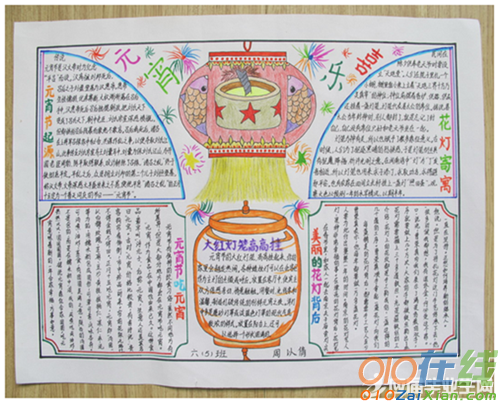
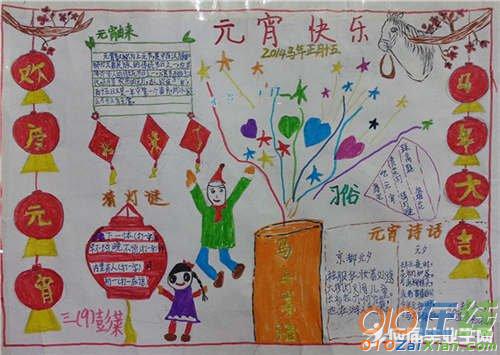
关于元宵节英语手抄报内容:
元宵节的一些习俗简介:
1、Eating Yuanxiao 吃元宵
Yuanxiao is named after a palace maid, Yuanxiao, of Emperor Wu Di of the HanDynasty. Yuanxiao is a kind of sweet dumpling, which is made with sticky riceflour filled with sweet stuffing. And the Festival is named after the famousdumpling. It is very easy to cook - simply dump them in a pot of boiling waterfor a few minutes - and eaten as a desert.
这是元宵是元宵节的特色食品。据说,元宵是因汉武帝时期的一位名叫元宵的宫女而得名。元宵是一种带馅儿的甜食,是由糯米粉加上甜的馅料制成。元宵节就是因此食品得名。元宵的烹制方法非常简单,将元宵倒入装满沸水的锅中煮几分钟就可以了。
2、Guessing lantern riddles 猜灯谜
"Guessing lantern riddles"is an essential part of the Festival. Lantern ownerswrite riddles on a piece of paper and post them on the lanterns. If visitorshave solutions to the riddles, they can pull the paper out and go to the lanternowners to check their answer. If they are right, they will get a little gift.
The activity emerged during people's enjoyment of lanterns in the Song Dynasty
(960-1279). As riddle guessing is interesting and full of wisdom, it has becomepopular among all social strata.
其中猜灯谜也是元宵节活动的一个基本组成部分。灯笼的所有者将谜语写在一张纸条上,然后将纸条展示在灯笼上。如果赏灯者猜出谜语,就将纸条取出,然后找灯笼所有者确认答案。打对的话,他们就可以领取一份小礼品。这个活动起源于宋朝(960——1279)。猜灯谜活动极富情趣和智慧,因此在全社会广受欢迎。
3、Watch fireworks 看烟火
In the daytime of the Festival, performances such as a dragon lantern dance, alion dance, a land boat dance, a yangge dance, walking on stilts and beatingdrums while dancing will be staged. On the night, except for magnificentlanterns, fireworks form a beautiful scene. Most families spare some fireworksfrom the Spring Festival and let them off in the Lantern Festival. Some localgovernments will even organize a fireworks party. On the night when the firstfull moon enters the New Year, people become really intoxicated by the imposingfireworks and bright moon in the sky.
在元宵节的白天会有舞龙舞狮、划旱船、扭秧歌、踩高跷。而在晚上,除了各种大型灯会,灿烂的焰火也是一幅美丽的画卷。很多家庭在春节时会留下一部分烟花等着元宵节放。有的地方政府甚至会组织焰火晚会。当新年的第一轮圆月升上夜空时,人们都会因燃放的烟火和空中的明月而兴奋。
元宵节美食——元宵
这是个大节日。另有一说是元宵燃灯的'习俗起源于道教的“三元说”;正月十五日为上元节,七月十五日为中元节,十月十五日为下元节。主管上、中、下三元的分别为天、地、人三官,天官喜乐,故上元节要燃灯。
在元宵节的节期与节俗活动,是随历史的发展而延长、扩展的。就节期长短而言,汉代才一天,到唐代已为三天,宋代则长达五天,明代更是自初八点灯,一直到正月十七的夜里才落灯,整整十天。与春节相接,白昼为市,热闹非凡,夜间燃灯,蔚为壮观。特别是那精巧、多彩的灯火,更使其成为春节期间娱乐活动的高潮。至清代,又增加了舞龙、舞狮、跑旱船、踩高跷、扭秧歌等“百戏”内容,只是节期缩短为四到五天。
上元,含有新的一年第一次月圆之夜的意思。上元节的由来,《岁时杂记》记载说,这是因循道教的陈规。道教曾把一年中的正月十五称为上元节,七月十五为中元节,十月十五为下元节,合称“三元”。汉末道教的重要派别五斗米道崇奉的神为天官、地官、水官,说天官赐福,地官赦罪,水官解厄,并以三元配三官,说上元天官正月十五日生,中元地官七月十五日生,下元水官十月十五日生。这样,正月十五日就被称为上元节。南宋吴自牧在《梦粱录》中说:“正月十五日元夕节,乃上元天官赐福之辰。”说天官赐福,地官赦罪,而元宵节俗真正的动力是因为它处在新的时间点上,人们充分利用这一特殊的时间阶段来表达自己的生活愿望。
【英语手抄报关于元宵节】相关文章:
2.元宵节英语手抄报
本文来源:https://www.010zaixian.com/wenxue/banbao/1890688.htm